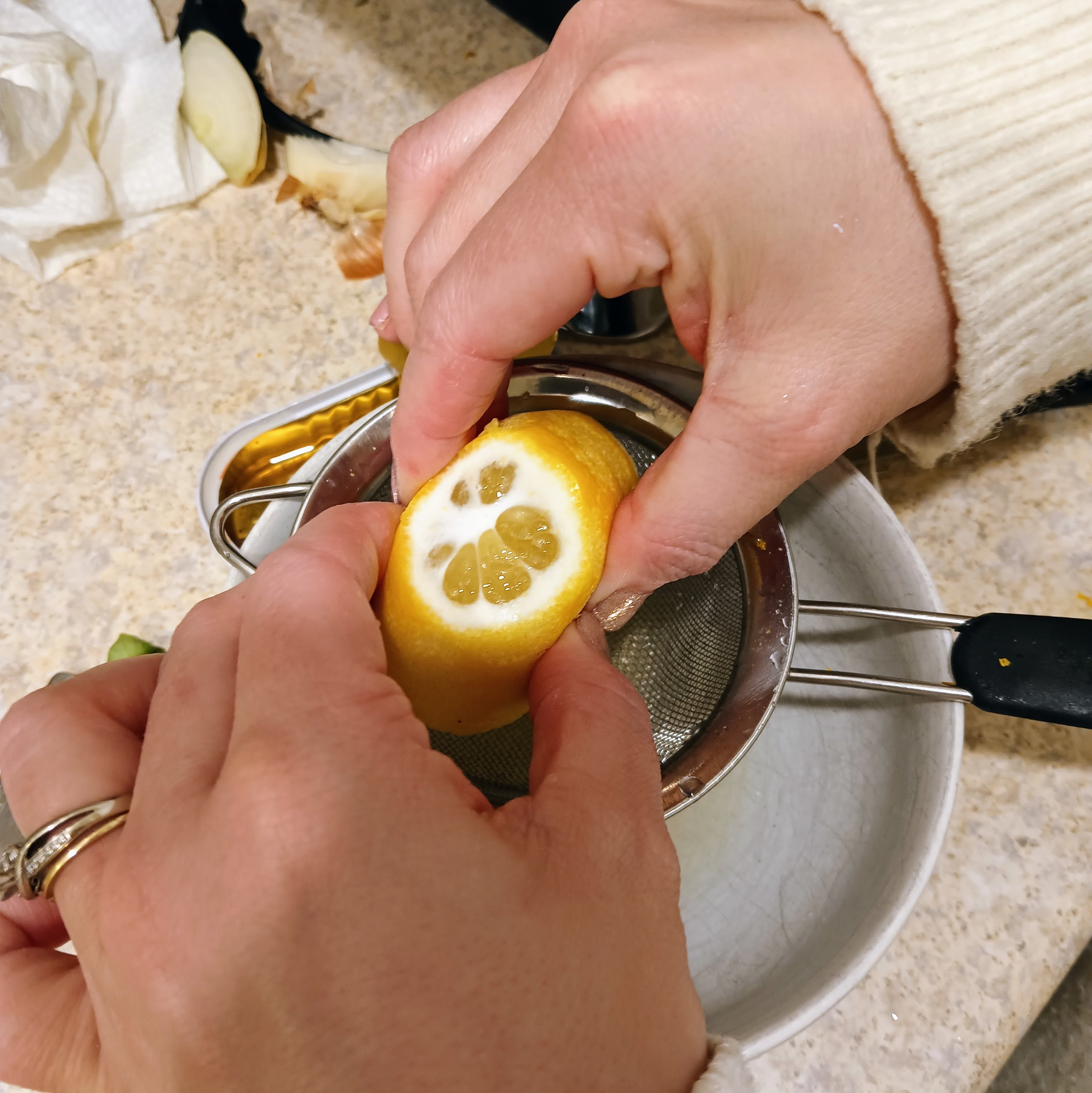The Forbidden Fruit Squeeze: This Juicing Hack Will Shatter Your Reality

Once upon a time, Matthew (that’s me) stumbled upon a small but mighty hack that makes lemon juicing way more efficient—less effort, more juice, and less frustration. Science collectively bowed before my citrus-squeezing prowess. NASA even called. They want my research on maximum juice efficiency. I declined. This power is too great for the Government to get their hands on.
And yes, before you say, “Well I have a lemon juicer and it literally changed my life. It catches seeds and gets lots of juice and even does my taxes!” I assert to you that my method is even better than a squeezer.
So what’s my magical method? Just cut off the end of the lemon before you squeeze it. That’s it. That’s the life-changing wisdom. I should be knighted for this.
When you cut off the end of the lemon before juicing, you’re essentially creating a direct path for the juice to escape, instead of trapping it inside. Here’s why it works so well:
- Less Structural Resistance – The tough outer rind and the pith (that white stuff) normally hold the lemon’s juice sacs in place, making it harder for them to release liquid. By chopping off the end, you expose those juice sacs directly, so when you squeeze, they burst open more easily.
- More Even Pressure Distribution – When you squeeze a normally cut lemon (halved through the middle), the juice has to navigate through a maze of pulp and membranes. With the end cut off, the pressure from your hands forces juice out straight through the exposed area instead of making it travel in all directions.
- The Capillary Effect – Some of the juice in a normal lemon stays stuck in the tiny fibrous tunnels of the pulp. By lopping off the end, you reduce the distance the juice has to travel and remove obstructions, allowing the liquid to flow out more readily.
- Less Pith Absorption – That thick white pithy layer? It’s like a sponge. When you cut into a lemon normally, some of the juice gets reabsorbed into it. Cutting the end off minimizes the surface area of pith that can soak up your precious lemony nectar.
What’s Better? The Cut and Squeeze or the Juicer?
All right, lemon juicer aficionados. Chances are I’m not talking a single one of you into giving up your juicer. And you know what? That’s fine. You bought it. You love it. Keep it.
But for those on the fence… I’m gonna make a case for why you really don’t need the squeezer.
My Method: The Hand-Squeeze with End-Cut Strategy
Pros:
✅ Higher Juice Yield – You’re not fighting against the lemon’s natural structure as much, so more juice comes out. You’re breaking down those pesky juice sacs more efficiently.
✅ Less Equipment, Less Cleanup – No need to haul out a juicer and clean it afterward. Just a knife and your hands.
✅ More Control Over Pulp and Seeds – You can aim the juice straight into a strainer or cup without a juicer flinging seeds into your drink.
✅ Tactile Satisfaction – Squeezing a lemon with your bare hands just feels powerful—like you’re extracting its soul. Every time I do it, I swear I hear the faintest citrusy scream.
Cons:
❌ Messy Hands – Lemon juice will get on your hands. If you have cuts? Good luck, enjoy the pain.
❌ Requires Grip Strength – If you’ve got weak hands, arthritis, or just don’t feel like crushing a fruit with sheer force, this isn’t ideal.
❌ Can Be Slippery and Awkward – If you don’t have the right grip, that lemon’s launching across the kitchen like a rogue grenade.
The Traditional Lemon Juicer (Handheld or Countertop)
Pros:
✅ Less Effort Required – The lever action (if using a hand press) or the ridged reamer (on a countertop juicer) does most of the work for you.
✅ Cleaner Hands – Less direct lemon contact means no sticky fingers or acidic stings.
✅ More Uniform Extraction – A juicer presses evenly, so even if you don’t cut the end off, it can still break down the juice sacs well.
✅ Less Chance of Seeds Slipping Through – Most juicers have built-in strainers, so you’re not fishing out rogue lemon embryos later.
Cons:
❌ Leaves Juice Behind – Many juicers don’t fully break down the inner structure like your method does. You’ll often see juice left in the pulp.
❌ More Cleanup – Now you have to wash your fancy juicer. Enjoy.
❌ More Equipment Needed – Good luck finding that juicer when you need it. It’s probably at the back of a cabinet, mocking you.
❌ Limited to Certain Citrus Sizes – Some handheld juicers struggle with irregularly sized lemons, and those reamer-style ones require a solid grip to twist the fruit effectively.
Verdict: My Method Wins
Yeah, I’m giving this one to myself. My method gets more juice with less equipment—which is the whole point, right? Unless you’re mass-juicing lemons like some kind of citrus warlord, my method is faster and more effective. Yay me, I’m an absolute genius. (But hey, if you are a citrus warlord, respect. Please don’t attack my village.)
That said, if someone has tired hands, wants to keep things cleaner, or is juicing dozens of lemons, a press-style juicer still has its merits. You do you. Unless what you do is wrong. In that case, rethink your life choices. Anyway, go forth and squeeze some lemons.
 Matthew Christensen
Matthew Christensen
Weekly Newsletter Contributor since 2023
Email the author! matthew@dvo.com
